I was the designer of the ThunderJets from 1972 to 1974 and the prototype monocoque, ThunderJet II and have photos that no-one has ever seen. That machine was 80 lbs lighter than the 72-73 ThunderJet and was MUCH faster. The only time I ever took it to a race, it won every class up to the 650 running a 56HP 292 Yamaha single cylinder. It ran circles around the earlier ThunderJets.
The Thunder Jet was, of course, the first modern high performance snowmobile with modern horsepower. I doubt if today's machines would be able to deal with the vintage Thunder Jets, especially with the better front suspension that would have been incorporated into the Thunder Jet II. It was to have an Oleo strut I copied from a B-25 Mitchell Bomber that I saw at the Confederate Air Force show in Brownsville, Texas. I believe it was a better choice than today's Macpherson struts. Macpherson struts were intended for cars with front wheel brakes which is not an issue with skis. Yamaha got hold of my Oleo strut prototype and used it for several years.
The 1973 Thunder Jet chassis weighed only 37 or 38 pounds (both long and short track versions). It weighed little more than 300 pounds wet. The Thunder Jet II, chassis weighed only 30 pounds. and weighed just over 200 pounds wet. The entire chassis was made of .040 7178-0 aluminum, heat treated to -T6 after forming. The production model was to be 8083 -T6, the strongest aluminum then available. It had a 2" narrower ski stance which helped in crowded turn ones, yet the tip angle was less due to a much lower center of gravity. The Thunder Jet II with a 56 hp 292 was quicker than the Thunder Jet I with a 115 hp 440 on a half mile track. At a race in Connecticut, my Mod I TJet II easily won Mod. I, II, III and IV at the only race it was ever entered in.
The prototype chassis had a buggy spring front suspension. The Oleo strut was much more stable and weighed 6 1/2 pounds less and had about 1" more travel. It had a hydraulic sway bar system that kept it level in the turns. The Thunder Jet II would have been a rude shock for the other manufacturers, much worse than the 72-73's were. The unsprung weight of the Thunder Jet II was about half that of the TJet I. The rear suspension had no control arms. It worked on cams that were progressive, light, simple and best of all much cheaper than the 4140 chrome moly control arms of the T Jet I's Arctic Cat type slide rail.
After Jim Ademas tragic death, building faster and faster machines lost some of the fun it had been for me. Jim may or may not have been the best driver but he was without a doubt the smartest setup man. When Jim went to work for Yamaha, he wanted to put a Thunder Jet chassis under his Yamaha cowl and seat but Yamaha wouldn't let him. Wasting Jim's talents as just a driver was the worst thing Yamaha ever did. They lost the greatest talent ever to race a snowmobile.
I believe the Thunder Jet that never was (TJet II), would dominate oval racing today. The tip angle was similar to the Ski Doo twin tracks and half the weight. It would be an interesting race.

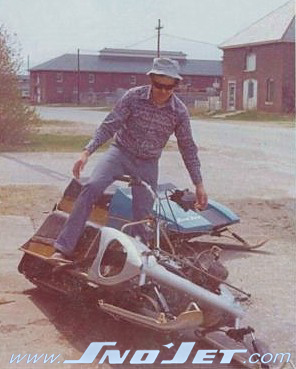
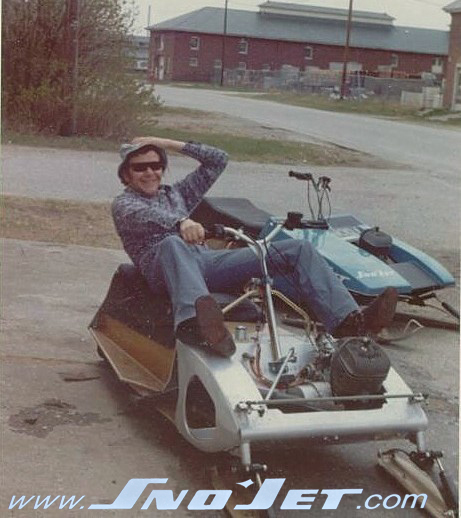
The skis were actually preloaded to take corners better. This was achieved by having one spindle longer than the other. Looking at the picture, you can see one side is about an inch longer.
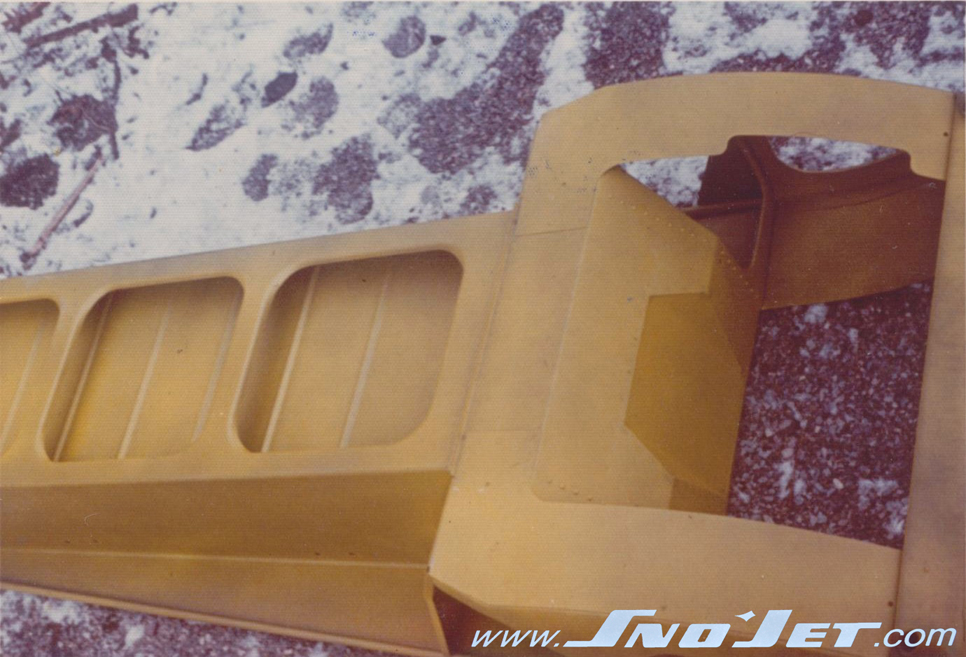
The motor was mounted to a 1/4 aluminum plate which mounted near the spindles and bent at the back at 90 degrees to actually mount to the tunnel.
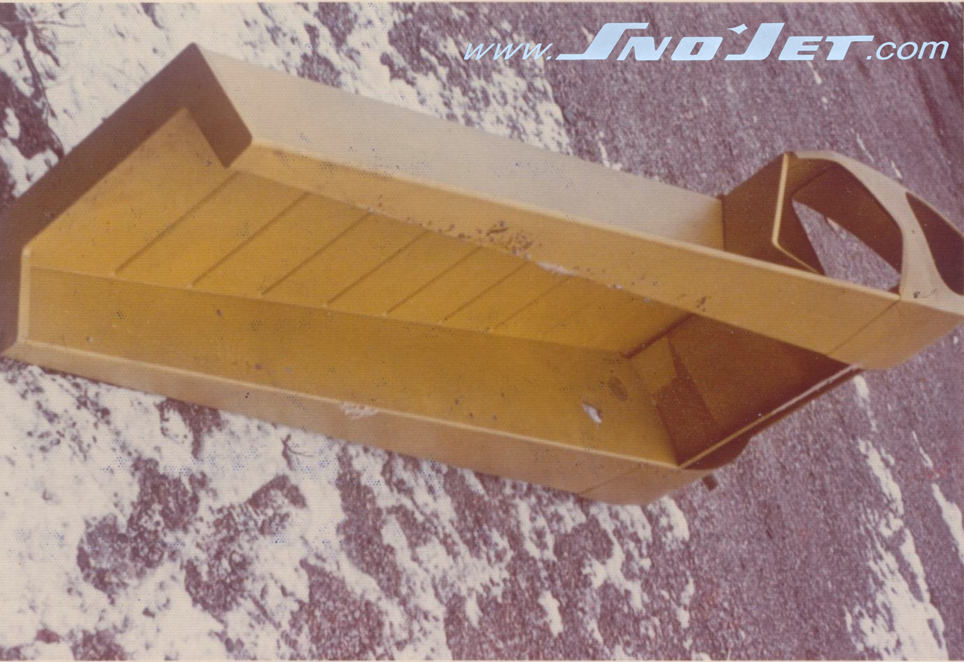
The 650 tunnel had a compartment, the air ram tubes from the carbs actually went into the compartment, and there was a screen to keep snow and debris out. It also kept the noise down which was important at the time.
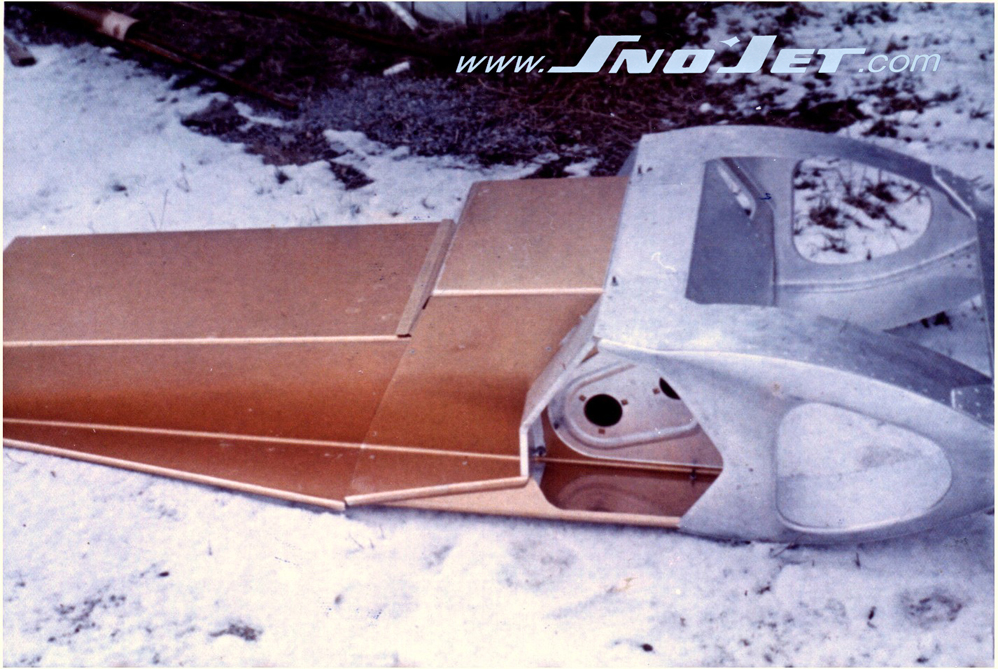
Angled chain case when everything else at that time was vertical. That was to adjust the distance from the skis to the driveshaft.
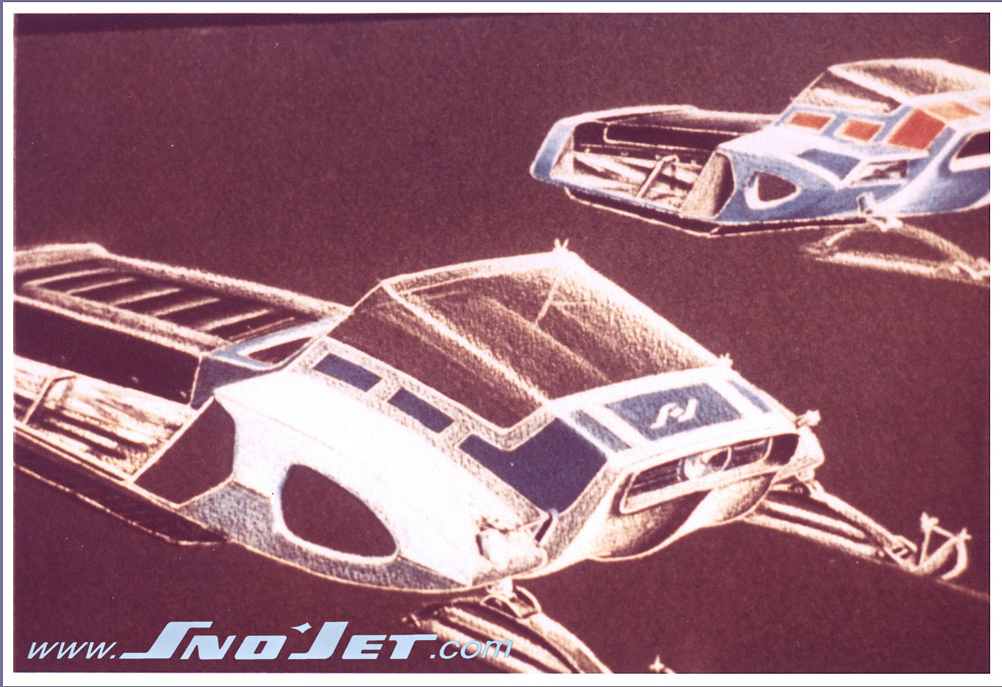
Some preliminary sketches.